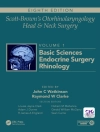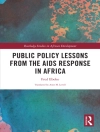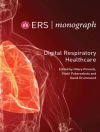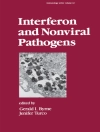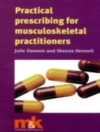<p><strong>Highly Commended by the BMA Medical Book Awards for Internal Medicine!</strong></p><p>Written and edited by internationally renowned specialists, the third edition of <em>Gastroenterological Endoscopy</em> covers the entire spectrum of diagnostic and therapeutic procedures for the upper and lower GI tract while providing the latest overview of GI disorders. A great wealth of high-resolution photographs provides the visual information needed to confidently assess and diagnose mucosal lesions of the entire digestive tract. Significant advances in the field—both medical and technical—since the last edition are covered in comprehensive detail.</p><p><b>Key Features:</b><ul><li>New panel of top international editors, continuing the tradition of excellence, depth, and breadth as originated by founding editors Classen, Tytgat, and Lightdale; list of contributing authors is a ‘who’s who’ of GI endoscopy</li><li>Coverage of newest, advanced tools and techniques: gastric-POEMS, submucosal tunnel endoscopic resection (STER), lumen-apposing metal stents, ‘over-the-scope’ clips, and much more</li><li>More than 750 exquisite images</li></ul></p><p><em>Gastroenterological Endoscopy</em>, third edition, surely deserves a prominent place in any complete endoscopy reference collection.</p>
Daftar Isi
<p><strong>I Introduction to Endoscopy</strong><br>1 Education and Training in Endoscopy<br>2 The Value of Clinical Research<br><strong>II The Patient and Endoscopy</strong><br>3 Informed Consent for Gastrointestinal Endoscopy<br>4 Patient Preparation and Sedation for Endoscopy<br>5 Design of the Endoscopy Suite<br>6 Cleaning and Disinfection in Endoscopy<br>7 Electrosurgical Principles for Endoscopy<br>8 Antibiotic Prophylaxis in Endoscopy<br>9 Quality Assurance in Endoscopy<br>10 Endoscopic Complications<br>11 Anticoagulation and Endoscopy<br><strong>III General Diagnostic and Therapeutic Procedures and Techniques</strong><br>12 Upper Gastrointestinal Endoscopy<br>13 Enteroscopy Techniques<br>14 Wireless Video Capsule Endoscopy<br>15 Colonoscopy: Preparation, Instrumentation, and Technique<br>16 Endoscopic Retrograde Cholangiopancreatography<br>17 Cholangioscopy<br>18 Advanced Imaging Methods<br>19 The Contribution of Histopathology to Endoscopy<br>20 Endoscopic Ultrasonography<br>21 Hybrid, Natural Orifice, and Laparoscopy-Assisted Endoscopy: New Paradigms in Minimally Invasive Therapy<br><strong>IV Upper Gastrointestinal Tract Disease</strong><br>22 Gastroesophageal Reflux Disease and Infectious Esophagitis<br>23 Barrett’s Esophagus and Early Neoplasia<br>24 Squamous Neoplasia of the Esophagus<br>25 Benign Esophageal Strictures and Esophageal Narrowing Including Eosinophilic Esophagitis<br>26 Achalasia<br>27 Advanced Esophageal Cancer<br>28 Peptic Ulcer Disease and Bleeding, Including Duodenal Ulcer<br>29 Gastric Cancer Including Early Neoplasia and Preneoplastic Conditions<br>30 Obesity: Endoscopic Approaches<br>31 Small Intestinal Diseases Beyond the Duodenum<br>32 Sporadic Neoplastic Polyps of the Duodenum and Ampulla<br>33 Malabsorption and Food Allergy/Intolerance<br>34 Portal Hypertension, Varices, Gastropathy, and Gastric Antral Vascular Ectasia<br><strong>V Lower Gastrointestinal Tract Disease</strong><br>35 Colorectal Polyps and Cancer Screening/Prevention<br>36 Advanced Colorectal Polyps and Early Cancer Resection<br>37 Inheritable Cancer Syndromes<br>38 Inflammatory Bowel Disease and Microscopic Colitis<br>39 Lower Intestinal Bleeding Disorders<br>40 Anorectal Diseases<br><strong>VI Biliopancreatic, Hepatic, and Peritoneal Diseases</strong><br>41 Benign Biliary Disorders<br>42 Malignant Biliary Disease<br>43 Acute and Chronic Pancreatitis<br>44 Pancreatic Cancers and Cystic Neoplasms<br>45 Subepithelial Tumors of the Gastrointestinal Tract<br>46 Gastrointestinal Foreign Bodies</p>


